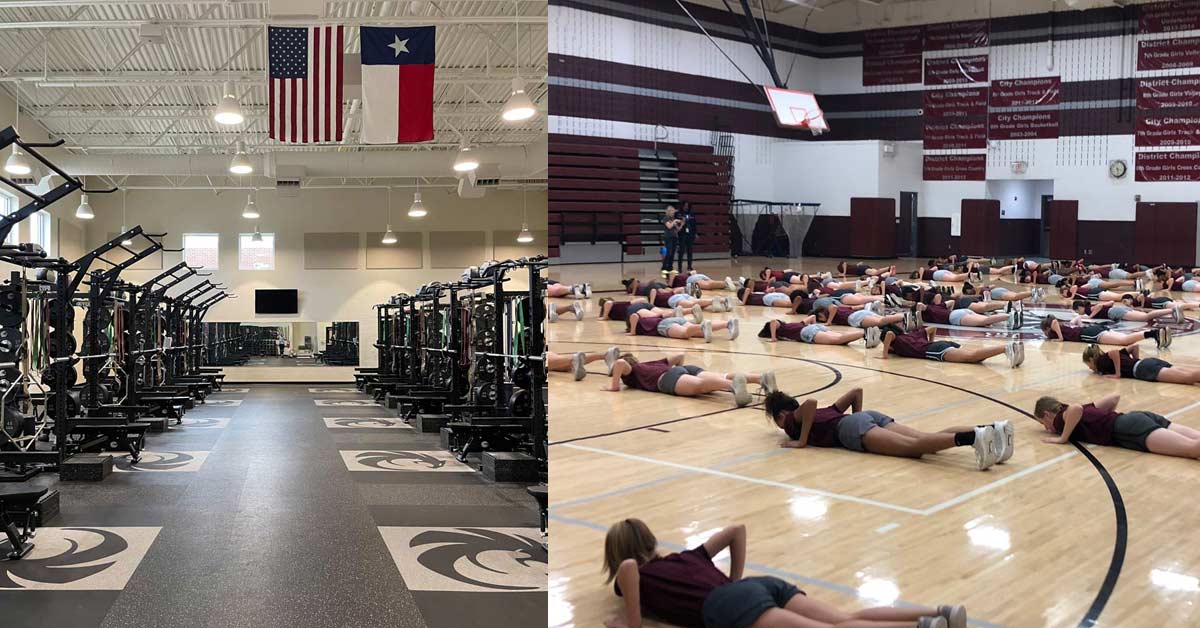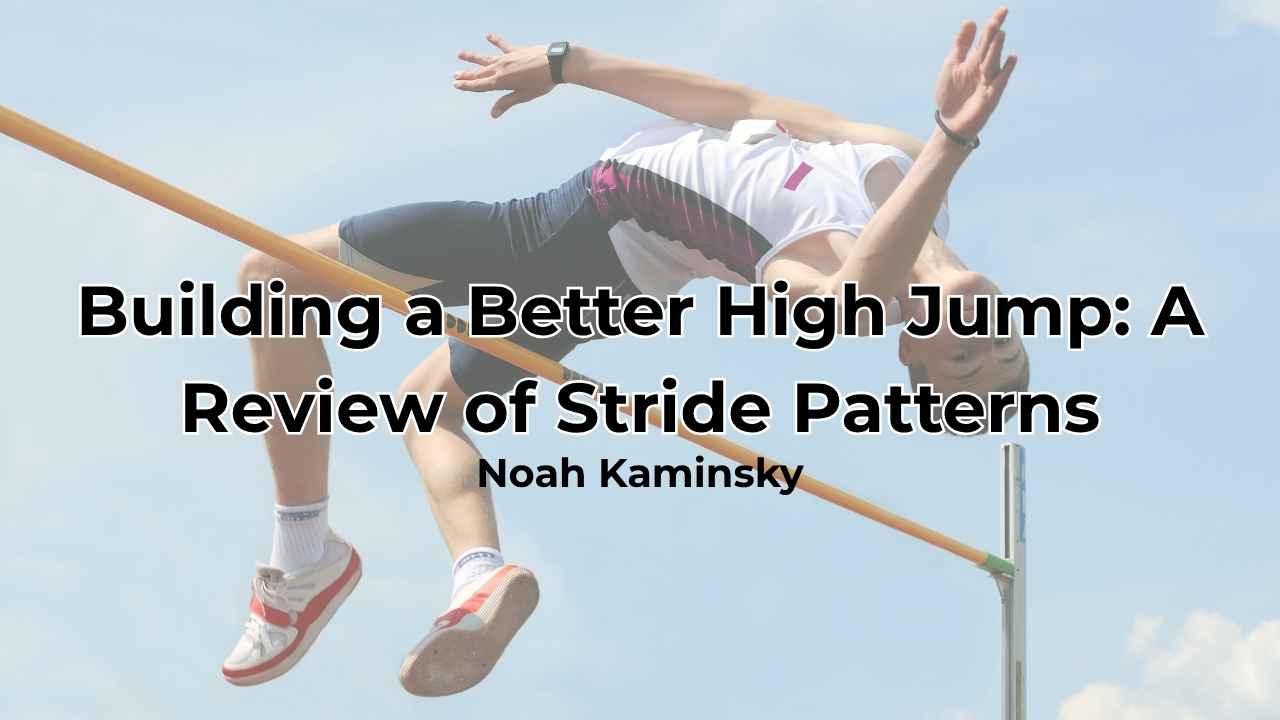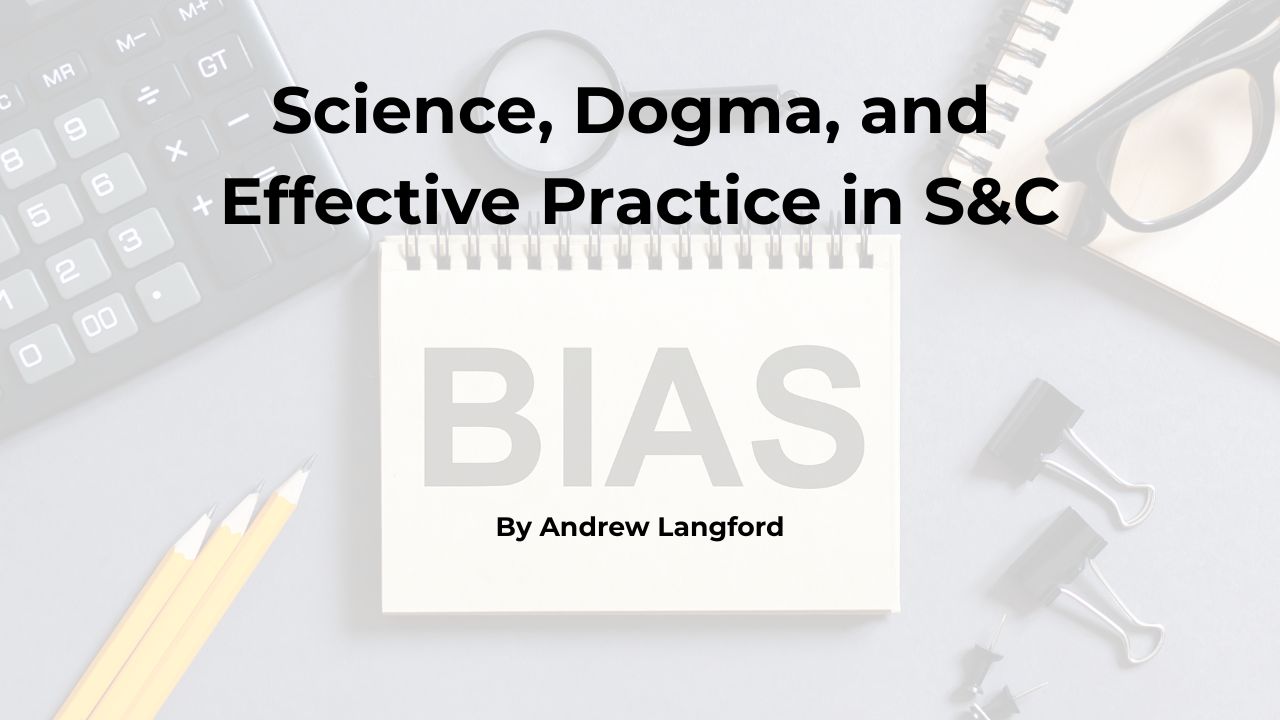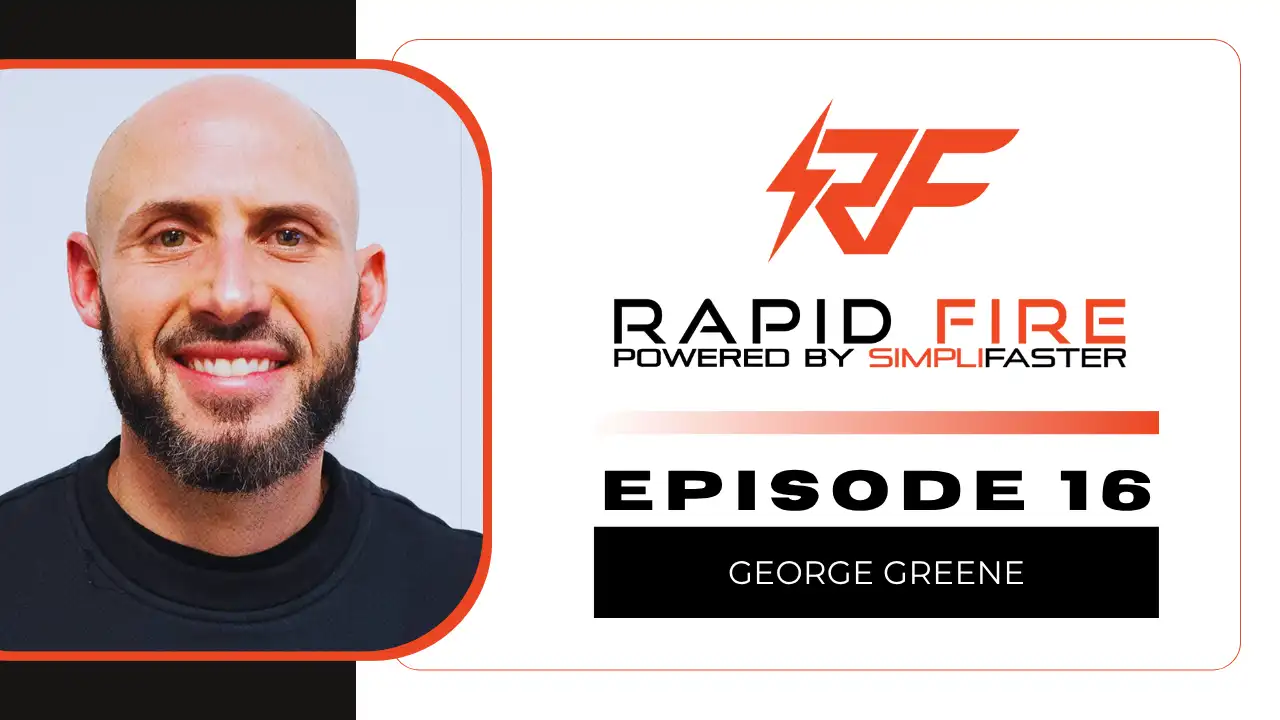Rachel Hayes is the Strength and Conditioning Coordinator at John H. Guyer High School in Denton, Texas—a position she’s held since 2015. She is responsible for designing and implementing all training aspects for Olympic sports. Rachel’s coaching path includes internships at Oklahoma State and The University of Alabama and a full-time stint at Stanford before moving to Texas.
Freelap USA: Recently, you quoted a tweet that said: “High School Strength and Conditioning jobs are NOT entry level.” Can confirm. Could you share some of the unique struggles in working with this population?
Rachel Hayes: Methodologically speaking, I believe one requires a deep and wide tool chest at the high school level. Familiarity with different methods and an unabashed attitude toward using them are non-negotiable. You’re limited on time, space, equipment, supervision, and just about every other resource. High school S&C requires enough experience to have a working acceptance that what’s worked with 100 kids may not work with the 101st.
High school S&C requires enough experience to have a working acceptance that what’s worked with 100 kids may not work with the 101st, says @rachelkh2. Share on XSometimes you really do have to reinvent the wheel to make it fit your needs. But without a deep, prior understanding of the wheel or how it can work, you’re not going to travel very far. Logistically speaking, it can be utter chaos. Holding on to ideals will only hold your kids back and exasperate you as a coach. The kids need to train, and there’s no room for you to cling to your preferences.
At Guyer, we’re fortunate to have three weight rooms on campus, and the Olympic sports share two. There isn’t a single athletic block on any day of the week where I don’t have at least three teams training simultaneously. Some mornings, there are as many as five between 7:30 a.m. and 9:20 a.m., each in a different phase of their season. The ability to manage each of these scenarios in a five-minute allotment while simultaneously putting out unforeseen fires in the process is not for the inexperienced.
Freelap USA: What do you feel are the minimum qualifications a candidate should have to obtain a high school strength and conditioning position?
Rachel Hayes: The minimum barrier to entry into high school strength and conditioning is a degree in exercise science or a related field, as well as a certification (or two). However, this doesn’t amount to being qualified; it’s only the price of an invitation to interview. I think, for high school, being qualified is more intrinsic because it requires a coach who loves to coach (teach), loves to learn, and isn’t afraid to embody humility. High school doesn’t come with big-name logos or notoriety, and you don’t have the cream of the crop together in one room.
Speaking from experience, you can have an athlete who’s the best in the nation and, two racks down, have a kid who weighs 95 pounds struggling to hold the bar. Realistically, half fall somewhere in the middle, while the other half resembles the 95-pounder. You need to possess the skills and abilities to help them, whether from previous experience or the moxie to mold yourself into a more dimensional coach.
Being qualified is knowing:
- How will you perform your job in less-than-ideal circumstances and still achieve desirable outcomes?
- What are your available communication strategies when it comes to multiple learning styles?
- How are you able to problem-solve unfamiliar problems of a logistical or methodological nature without preparation?
- What diverse training experiences or knowledge can you draw from and apply to this age group in a safe but specific way?
- How do your communication skills and emotional intelligence match the demands and daily interactions with adolescents, parents of adolescents, administrators, sport coaches, and other members of the staff?
Of course, there are many more points to consider when it comes to qualifications, but these are the major players on a day-to-day basis.
Freelap USA: You do tremendous work with all of your teams, but your boys’ basketball team has been incredibly successful over the years. What are your biggest areas of emphasis with these athletes?
Rachel Hayes: Thank you for the compliment. I believe our environment, our culture, and those around me help to make our athletics successful. Our boys’ basketball program has enjoyed remarkable success, and I’ve been fortunate to be a small part of their journey. I’m thankful to have a head coach who values the importance of consistent training and the health of his athletes year-round.
I could climb on a two-story soapbox and filibuster this until I retire. Consistency is everything, and we don’t deviate, no matter the circumstances, says @rachelkh2. Share on XThere are several cornerstones to this program, and they aren’t exercises or specific methodologies but fundamental pillars we adhere to:
- Consistency. I could climb on a two-story soapbox and filibuster this until I retire. Consistency is everything, and we don’t deviate, no matter the circumstances. This doesn’t mean we lift just to lift; rather, we keep health and performance the consistent themes throughout the year. Sometimes this comes in the form of a lift; sometimes, it comes in the form of collaboration on how we can get the guys more recovery.
- Stimulus over exercise selection. Working with athletes who never stop playing is a challenge, but keeping in mind that weight room exercises are not the priority provides ample clarity. You have to chase adaptation, but sometimes without the obvious choices. This doesn’t mean we don’t lift heavy, but how we lift heavy and when are perhaps a little less mainstream. Heavy carries, shorter ranges of motion, and occasional accessory work often comprise our main lifts at different times of the year. Being married to exercises or methods is detrimental to the athlete. Look to create an adaptation and find what can best accomplish that without causing harm.
- TLC of the feet and ankles. Highly simple and highly beneficial. Barefoot lifting and isolation of the feet and lower leg complex cannot be overstated. Move the foot and calf in different planes, ranges of motion, and angles, and do it every day. Not only do we get a reduction in injury, but also better performance. These kids live in basketball shoes and braces, and their feet adapt to these restrictions. Free them and strengthen them.
Freelap USA: With these and other select/club sport athletes, what measures do you take to ensure they develop athletically despite a year-round competitive schedule?
Rachel Hayes: Most of my athletes play year-round and have specialized from an early age. Like many millions of young athletes across the country, their physical and athletic development contains some gaps. Personally, I don’t believe the weight room or strength coach is the ultimate remedy for this issue, just a modern solution that helps.
My biggest areas of emphasis are pattern fundamentals, strength, power, and speed. My middle school through ninth graders focus heavily on body awareness, control, and mastering fundamental weight room patterns. Tenth through 12th grades are devoted to building strength (relative and absolute) as well as speed and power.
Even with dual competitive schedules, physical development can be accomplished, but, as I mentioned previously, in perhaps less mainstream or widely accepted ways. As a side note, working with this population will truly bring out the artist in you as a coach, so long as you know your science and put the athlete first.
Freelap USA: What was your biggest “aha” moment in 2022?
Rachel Hayes: Although we’re now embarking upon the 2023 calendar year, I’d like to reflect on two “aha” moments of the past year.
The first is being content to avoid variation for the sake of variation. For a long time, I was afraid that if I didn’t change or alter a lift, I was being lazy and not serving my athletes. And although this realization occurred more out of necessity than my own intervention, I had it, nonetheless. For the absolutists out there, this is not to say I don’t modify or tweak things, but I am making fewer significant changes as frequently. I’m observing better mastery, and despite my worries, the kids are still bought in and engaged.
The second “aha” came with the adoption of zone 2 conditioning. Although this occurred on a more personal level, through a coach’s conditioning cohort, the implications as an exercise practitioner have been illuminating and helpful. The biggest impact has been on my sleep, which, as we know, is the ultimate activity for recovery and health. I look forward to learning more and implementing this in the coming year.
Since you’re here…
…we have a small favor to ask. More people are reading SimpliFaster than ever, and each week we bring you compelling content from coaches, sport scientists, and physiotherapists who are devoted to building better athletes. Please take a moment to share the articles on social media, engage the authors with questions and comments below, and link to articles when appropriate if you have a blog or participate on forums of related topics. — SF





